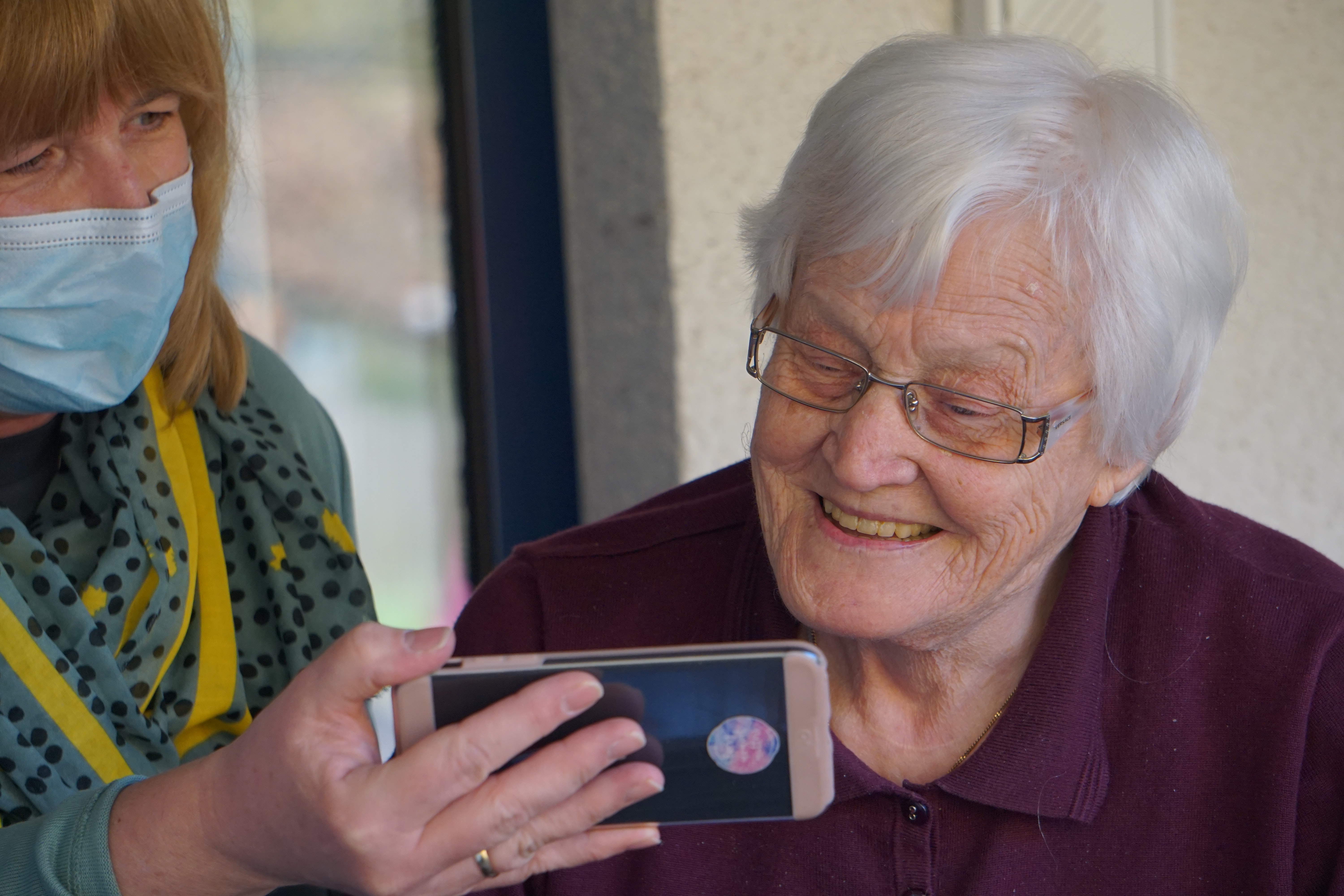
Tips for Caring for Patients with COPD and other Lung Diseases
November 16 2021
7 Tips to Help Care for Chronic Lung Disease
Many of us take the simple act of breathing for granted. But for the millions of Americans that suffer from some form of lung disease, being able to breathe a little easier is something they don’t take for granted. Lung diseases can affect the body’s ability to absorb life-giving oxygen, and these symptoms may get worse over time. That is why it is so important to help lung disease patients manage and pay attention to their symptoms.
Types and Symptoms of Lung Disease
Many lung diseases have similar symptoms and can range in intensity from mild to very severe. The most common symptoms include shortness of breath, fatigue and frequent cough. These symptoms can unfortunately prevent many from doing the things they love. Lung diseases fall into three main categories.
Restrictive: This is when a person has difficulty drawing in breath and fully expanding their lungs. This is caused by inflammation and scarring of the lung tissue. Some of these conditions are called interstitial lung disease. Common types include:
- Pneumoconiosis
- Eosinophilic pneumonia
- Sarcoidosis
- Pulmonary fibrosis
Obstructive: This causes airways to narrow, making it hard to exhale. Common types include:
- Chronic obstructive pulmonary disease (COPD)
- Chronic bronchitis
- Asthma
- Bronchiectasis
- Bronchiolitis
- Cystic fibrosis
Pulmonary Vascular: This type of lung disease causes difficulty breathing due to problems with the blood vessels that connect the lungs to the heart. Common types include:
- Pulmonary arterial hypertension
- Pulmonary venous hypertension
- Pulmonary embolism
Caring for Patients with Lung Diseases
It is key that you help patients with lung disease find comfort or some relief. It is also very important to watch for signs of worsening symptoms, so that the problems can be addressed promptly. Here are some tips for caring for those with lung disease.
Journal It
Encourage your patient to keep track of their health by keeping a daily health journal. You may be recording some of these things as well, but this can help the patient be more in tune with their own body and changes in their breathing. Things to record include:
- Breathing patterns (how difficult or easy, coughing, wheezing, tightness, etc.)
- Medications (time taken, adverse side effects or improvements in symptoms)
- Dietary and digestive changes
- Sleep habits and quality
- Blood pressure, cardiac rate, respiratory rate and oxygen saturation
- Exercise or other activities that require physical exertion and the effects of said activity
Diet is Important
A nutritious diet is important for anyone, however, being overweight or obese can make it even more difficult to breathe well. Instead of three larger meals a day, consider having the patient eat four to six smaller meals throughout the day. This will help them feel less full, which puts less stress on their diaphragm. Lung disease patients should also avoid foods that cause gas or bloating as this can be especially uncomfortable. Finally, some medications used to treat lung disease can interfere with metabolism of vitamins and minerals like calcium and vitamin D. Make sure their food is nutritious or check with the doctor to see if dietary supplements should be added.
Exercise
Regular exercise can help build endurance and muscle strength, ultimately making it easier to breathe. A trained therapist will help set an appropriate exercise regimen for individual patients. Encourage the patient or your loved one to stick to the prescribed exercises. They may also want to limit or avoid conversations during activity as this can make it harder for them to breathe.
Improve Indoor Air Quality
Minimizing exposure to irritants and air pollution is very important. First, if the patient is a smoker, do everything you can to help them cease smoking. If oxygen is needed, it is necessary that they quit smoking. Both first and secondhand smoke can be an irritant, so family members that smoke should be encouraged to cease or to take it outside. Other things to avoid include strong smelling cleaners and heavily fragranced products. Regular vacuuming and dusting should be done to minimize dust, pet dander, and other indoor air irritants. HEPA filters should be used to minimize particles that are thrown back into the air. Regularly clean fabric curtains, rugs, carpeting, pillows and other soft decor items. Ensure moist areas that are prone to mold growth are properly ventilated.
Modify the Home
Lung disease can drain a person’s energy, so organize the home in an efficient manner. Put most used items within easy reach and get a shower chair for easier bathing. If the patient finds it easier to breathe with the AC on or a fan blowing on them directly, help set the thermostat at a comfortable temperature or set up a fan.
Avoiding Infections
Having lung disease can put a person at increased risk for lung infections. Vaccines are often recommended. The flu vaccine is recommended yearly and the pneumonia vaccine is recommended every five to seven years. Help the patient obtain any vaccines recommended by their doctor. Proper hand washing hygiene is also recommended.
Techniques to Bring up Mucus
Finally, mucus can collect in airways making it even more difficult to breathe and can lead to infection. Help the patient learn proper techniques to bring up mucus.
- Deep coughing: take a deep breath and hold it for three seconds. Use your stomach muscles to expel the air while avoiding a hacking cough or just clearing your throat.
- Huff coughing: take a breath that is slightly deeper than normal. Use your stomach muscles to make a “ha, ha, ha” sound while you exhale. Follow this by diaphragmatic breathing and a deep cough if you feel mucus moving.
A Helping Hand
If you or your loved one need help at home caring for COPD or other chronic lung disease, our friendly and knowledgeable experts are ready to help! We personalize care plans and treat patients like our own family. Contact us today to learn more!





